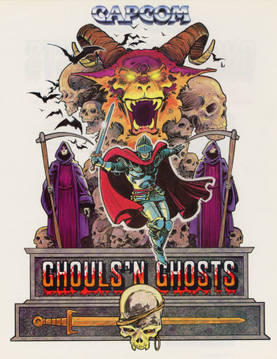
Ghouls 'n Ghosts, known as Dai Makaimura in Japan, is a side-scrolling platform game developed by Capcom, released as an arcade video game in 1988 and ported to home platforms. It is the sequel to Ghosts 'n Goblins and the second game in the Ghosts 'n Goblins series.

Columns is a match-three puzzle video game released by Jay Geertsen in 1989. Designed for the Motorola 68000-based HP 9000 running HP-UX, it was ported to Mac and MS-DOS before being released commercially by Sega who ported it to arcades and then to several Sega consoles. The game was subsequently ported to other home computers, including the Atari ST.

Shinobi (忍) is a side-scrolling hack and slash video game produced by Sega, originally released for arcades on the Sega System 16 board in 1987. The player controls ninja Joe Musashi, to stop the Zeed terrorist organization from kidnapping students of his clan.

Paperboy is an action game developed and published by Atari Games and released as an arcade video game in 1985. The player takes the role of a paperboy who delivers a fictional newspaper called The Daily Sun along a street on his bicycle. The arcade version of the game featured bike handlebars as the controller.

Operation Wolf is a light gun shooter arcade game developed by Taito and released in 1987. It was ported to many home systems.

Golden Axe is a 1989 hack and slash game developed and published by Sega for arcades, running on the Sega System 16B arcade hardware. Makoto Uchida was the lead designer of the game, and was also responsible for the creation of the previous year's Altered Beast. The game casts players as one of three warriors who must free the fantastical land of Yuria from the tyrannical rule of Death Adder, who wields the titular Golden Axe.
1990 saw many sequels and prequels in video games, such as Metal Gear 2: Solid Snake, Dr. Mario, Dragon Quest IV, Final Fantasy III, Phantasy Star II, and Super Mario World, along with new titles such as Fire Emblem: Shadow Dragon and the Blade of Light and Magic Sword. The year's highest-grossing arcade video games were Final Fight in Japan and Teenage Mutant Ninja Turtles in the United States. The year's best‑selling system was the Game Boy, while the year's best-selling home video game was Super Mario Bros. 3 for the Nintendo Entertainment System.
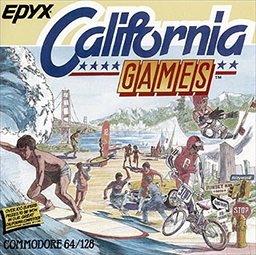
California Games is a sports video game released by Epyx for the Apple II and Commodore 64 in 1987. Branching from their Summer Games and Winter Games series, this game is a collection of outdoor sports purportedly popular in California. It ported to other home computers and video game consoles and was the pack-in game for the Atari Lynx when that system launched in 1989. The game was successful and spawned a sequel, California Games II.
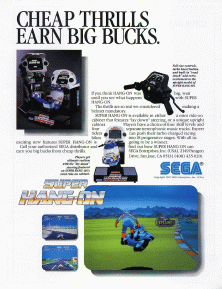
Super Hang-On is a motorcycle racing arcade video game released by Sega as the sequel to Hang-On. It uses a simulated motorcycle arcade cabinet, like the original game. An updated version was released in arcades 1991 as Limited Edition Hang-On.

Xenon 2: Megablast is a 1989 shoot 'em up video game developed by The Bitmap Brothers and published by Image Works for the Amiga and Atari ST. It was later converted to the Master System, PC-98, X68000, Mega Drive, Commodore CDTV, Game Boy, Acorn Archimedes and Atari Jaguar platforms. The game is a sequel to Xenon and takes place a millennium after the previous title. The goal of the game is to destroy a series of bombs planted throughout history by the Xenites, the vengeful antagonists of the first game.
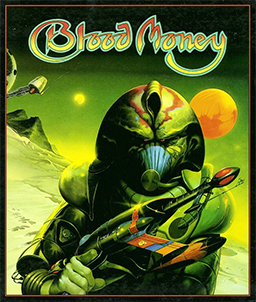
Blood Money is a 1989 side-scrolling shooter video game developed by DMA Design and published by Psygnosis. It was released for the Amiga, Atari ST, and MS-DOS in 1989, and for the Commodore 64 in 1990. The game is set in four different locations on a planet, where the player must fight off enemies and bosses.
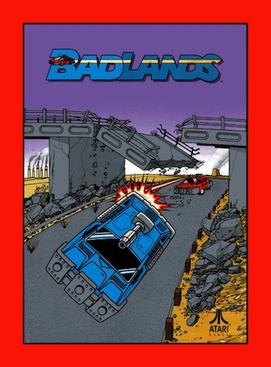
Badlands is a 1989 arcade video game published by Atari Games. It was ported by Domark under the Tengen label to the Amiga, Amstrad CPC, Atari ST, Commodore 64, and ZX Spectrum. The game is a re-themed version of Atari's previous racing games Super Sprint and Championship Sprint with the addition of vehicular combat. Badlands is set in the aftermath of a nuclear war and races around abandoned wastelands with many hazards. Three gun-equipped cars race around a track to win prizes.
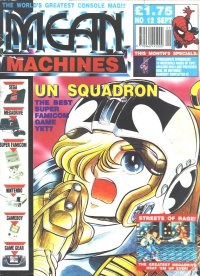
Mean Machines was a multi-format video game magazine published between 1990 and 1992 in the United Kingdom.

The Immortal is an isometric action-adventure game originally created by Will Harvey and released by Electronic Arts in 1990 for the Apple IIGS. It was soon ported to the Amiga, Atari ST, DOS, Nintendo Entertainment System, and Genesis. A wizard is attempting to find his mentor in a large and dangerous labyrinth. It has a high degree of graphic violence. In 2020, the NES port was re-released on the Nintendo Switch Online service, while the Genesis port was re-released on the Piko Collection Collection 1 cartridge for the Evercade.
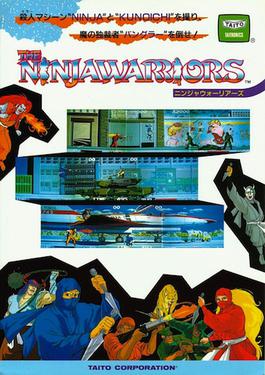
The Ninja Warriors (ニンジャウォーリアーズ) is a side-scrolling beat 'em up video game developed and released by Taito in 1987. The original arcade game situated one display in between projected images of two other displays, creating the appearance of a triple-wide screen. Ports were released for home systems including the Amiga, Atari ST, ZX Spectrum, Commodore 64, Amstrad CPC, PC Engine, and Sega Mega-CD.

Super Monaco GP is a Formula One racing simulation video game released by Sega, originally as a Sega X Board arcade game in 1989, followed by ports for multiple video game consoles and home computers in the early 1990s. It is the sequel to the 1979 arcade game Monaco GP. The arcade game consists of one race, the Monaco Grand Prix, but later ports added more courses and game modes based on the 1989 Formula One World Championship.

Indiana Jones and the Last Crusade: The Action Game was published in 1989 by Lucasfilm Games, based on the film of the same name. The game was released for the ZX Spectrum, Amstrad CPC, Commodore 64, Atari ST, Amiga, IBM PC, MSX, Master System, NES, Game Boy, Sega Genesis and Game Gear.

Hostages is a 1988 tactical shooter video game developed and published by Infogrames for the Acorn Electron, Archimedes, Atari ST, Amiga, Apple IIGS, Amstrad CPC, BBC Micro, Commodore 64, MS-DOS, MSX, Nintendo Entertainment System, and ZX Spectrum. The game depicts a terrorist attack and hostage crisis at an embassy in Paris, with the player controlling a six-man GIGN counterterrorist team as they are deployed to defeat the terrorists and free their hostages.
The 1980s was the second decade in the industry's history. It was a decade of highs and lows for video games. The decade began amidst a boom in the arcade video game business with the golden age of arcade video games, the Atari 2600's dominance of the home console market during the second generation of video game consoles, and the rising influence of home computers. However, an oversatuation of low quality games led to an implosion of the video game market that nearly destroyed the industry in North America. Most investors believed video games to be a fad that had since passed, up until Nintendo's success with its Nintendo Entertainment System revived interest in game consoles and led to a recovery of the home video game industry. In the remaining years of the decade, Sega ignites a console war with Nintendo, developers that had been affected by the crash experimented with PC games, and Nintendo released the Game Boy, which would become the best-selling handheld gaming device for the next two decades. Other consoles released in the decade included the Intellivision, ColecoVision, TurboGrafx-16 and Sega Genesis.
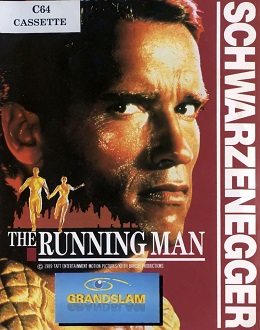
The Running Man is a 1989 beat 'em up video game based on the 1987 film of the same name. It was developed by Emerald Software and published by Grandslam Entertainments for Amiga, Amstrad CPC, Atari ST, Commodore 64, and ZX Spectrum.


















